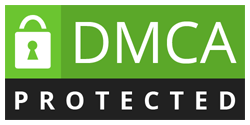Pupillometer: Price, Pupilometer Card & Eye Chart, Neuroptics Devices, NPI
- What is Pupillometer?
- Price
- Pupilometer Card Eye Chart
- Neuroptics Devices
- NPI
What is Pupillometer?
A Pupillometer is a specialized device used to measure the size and reactivity of the pupils. It is widely used in ophthalmology, neurology, emergency medicine, and intensive care units to assess neurological function and detect abnormalities. The device helps clinicians record accurate pupil diameters in millimeters and assess changes in light reflex, which can provide critical diagnostic information about brain injuries, cranial nerve function, or ocular disorders.

There are both manual and automated pupillometers. Manual devices usually consist of a calibrated ruler or card that allows quick estimation of pupil size. In contrast, digital or automated pupillometers use infrared technology to provide precise, objective measurements. These advanced models also record pupillary light reflex dynamics, making them particularly useful in critical care and neuro-assessment settings.
Price
The price of a pupillometer varies widely depending on the type and level of sophistication. Basic manual pupillometer cards can cost as little as a few dollars, making them accessible to most clinics and healthcare workers. These cards are often disposable or reusable, designed for quick bedside pupil assessments.
Digital pupillometers, on the other hand, are more advanced and can cost between $2,000 and $8,000 USD, depending on the brand and features. Hospital-grade devices with integrated software, data recording, and NPI scoring capabilities are at the higher end of the price range. Facilities often justify the cost through improved diagnostic accuracy, reduced variability between examiners, and the ability to store objective data for patient monitoring over time.
Pupilometer Card Eye Chart
A Pupilometer Card is a simple but valuable tool for quickly measuring pupil size at the bedside. It typically features a printed millimeter scale and examples of pupil sizes to help clinicians match and record measurements accurately. These cards may also include a basic eye chart or reference for visual acuity testing, combining two essential tools in one compact format.
Healthcare providers often use pupilometer cards in emergency departments, general wards, and during neurological checks. While they do not provide the same level of precision as electronic pupillometers, they are highly portable, cost-effective, and suitable for routine examinations. Laminated versions or those made from durable plastic can be sanitized easily, making them suitable for repeated use in clinical settings.
Neuroptics Devices
Neuroptics is a leading manufacturer of automated pupillometers used worldwide in neurology, critical care, and anesthesia. Their devices, such as the NPis™ pupillometer, use infrared technology to provide highly accurate and consistent measurements of pupil size and light reflex. They also calculate the Neurological Pupil index (NPI)
These devices are particularly valuable in intensive care units and trauma settings, where subtle changes in pupillary function can indicate significant neurological events, such as increased intracranial pressure or early herniation. Neuroptics pupillometers integrate with hospital electronic medical records, allowing for streamlined data collection and trend analysis, improving both patient outcomes and workflow efficiency.
NPI
The Neurological Pupil index (NPI) is a standardized score generated by automated pupillometers, typically ranging from 0 to 5. An NPI score of 3 or higher is generally considered normal, while lower values may indicate abnormal pupillary reactions and potential neurological compromise. This scoring system reduces inter-observer variability and allows clinicians to track changes in pupillary function over time with objective, quantifiable data.
NPI has become a critical tool in neurocritical care. For example, a declining NPI may signal increasing intracranial pressure or worsening neurological status, prompting early intervention. Because manual assessments can be subjective, the use of NPI through devices like Neuroptics pupillometers has become standard in many hospitals to enhance accuracy and support better clinical decisions.
 Reviewed by Simon Albert
on
June 20, 2025
Rating:
Reviewed by Simon Albert
on
June 20, 2025
Rating:











